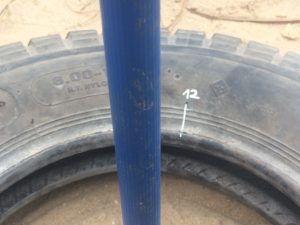
 Hundreds of years ago sundial is the most common device that people use to tell time. Comparing sundial to a normal watch, watch is run by it’s hand and sundial is run by the shadow from the sun. It is a motionless device to tell time in the last decade. As the sun move from east to west the shadow will move from west to east if it stay at the same place. Sundial can be carried around unless it is a small size one. There are many types of sundial, and mostly people attached with their rings. Before the coming of the railways in the 1830s and 1840s, local time was displayed on a sundial and was used by the government and commerce. Before the invention of the clock the sundial was the only source of time, after the invention, the sundial became more important as the clock needed to be reset regularly from a sundial- as its accuracy was poor. A clock and a dial were used together to measure longitude. Dials were laid out using straightedges and compasses. In the late nineteenth century sundials became objects of academic interest. The use of logarithms allowed algebraic methods of laying out dials to be employed and studied. No longer utilitarian, sundials remained as popular ornaments, and several popular books promoted that interest- and gave constructional details. Affordable scientific calculators made the algebraic methods as accessible as the geometric constructions- and the use of computers made dial plate design trivial. The heritage of sundials was recognized and sundial societies were set up worldwide, and certain legislation made studying sundials part of their national school curriculum.
Hundreds of years ago sundial is the most common device that people use to tell time. Comparing sundial to a normal watch, watch is run by it’s hand and sundial is run by the shadow from the sun. It is a motionless device to tell time in the last decade. As the sun move from east to west the shadow will move from west to east if it stay at the same place. Sundial can be carried around unless it is a small size one. There are many types of sundial, and mostly people attached with their rings. Before the coming of the railways in the 1830s and 1840s, local time was displayed on a sundial and was used by the government and commerce. Before the invention of the clock the sundial was the only source of time, after the invention, the sundial became more important as the clock needed to be reset regularly from a sundial- as its accuracy was poor. A clock and a dial were used together to measure longitude. Dials were laid out using straightedges and compasses. In the late nineteenth century sundials became objects of academic interest. The use of logarithms allowed algebraic methods of laying out dials to be employed and studied. No longer utilitarian, sundials remained as popular ornaments, and several popular books promoted that interest- and gave constructional details. Affordable scientific calculators made the algebraic methods as accessible as the geometric constructions- and the use of computers made dial plate design trivial. The heritage of sundials was recognized and sundial societies were set up worldwide, and certain legislation made studying sundials part of their national school curriculum.
